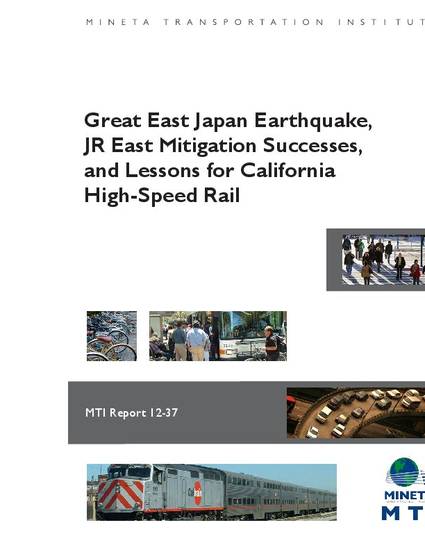
California and Japan both experience frequent seismic activity, which is often damaging to infrastructure. Seismologists have developed systems for detecting and analyzing earthquakes in real-time. JR East has developed systems to mitigate the damage to their facilities and personnel, including an early earthquake detection system, retrofitting of existing facilities for seismic safety, development of more seismically resistant designs for new facilities, and earthquake response training and exercises for staff members. These systems demonstrated their value in the Great East Japan Earthquake of 2011 and have been further developed based on that experience. Researchers in California are developing an earthquake early warning system for the state, and the private sector has seismic sensors in place. These technologies could contribute to the safety of the California High-Speed Rail Authority’s developing system, which could emulate the best practices demonstrated in Japan in the construction of the Los Angeles-to-San Jose segment.
- Earthquake detection,
- Earthquake early warning,
- Seismic design,
- Seismology,
- Retrofitting
Available at: http://works.bepress.com/frances_edwards/84/
